II - Energy #
Energy Is in the Air; You Can’t See It, but It’s There. #
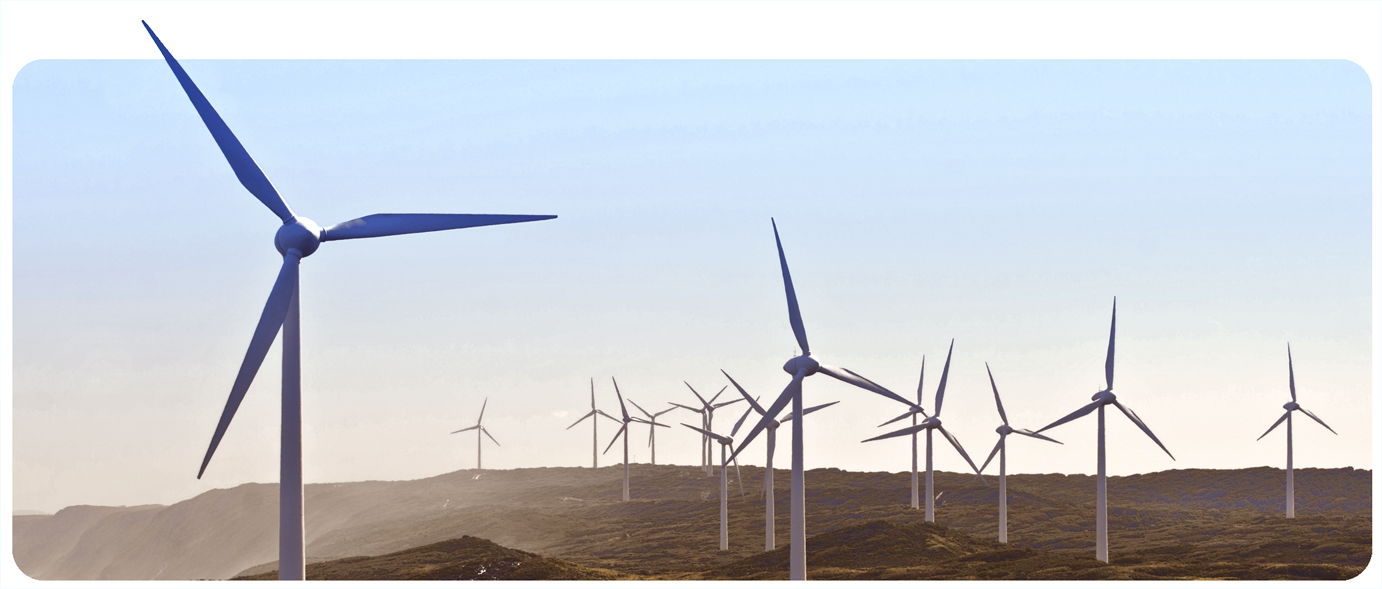
Wind turbines on a wind farm in Western Australia. Image courtesy of Getty Images.
Introductory Thoughts #
A fluid in motion has remarkable abilities, as indicated by the constructive power generated by wind turbines, all the way to the destructive power unleashed by hurricanes. This capability comes from a fluids ability to attain and deploy vast amounts of energy.
Energy #
To properly discuss complex aerodynamics behavior, some general physics needs to be reviewed first. This material may appear dry initially, but it’s worth sticking through.
Work & Energy #
In physics, energy quantifies how much useful “work” an object is capable of. Work is a force applied over a distance. So, for example, to move a heavy block a given distance, work has to be done to that block by applying a strong force to it over that distance. The mover of the block can only do so much work before their energy is depleted.

There are multiple forms of energy for a solid, but the primary types are the following:
-
Potential energy quantifies how much work a body can do by virtue of its position, internal stresses, electrical charge, chemistry…etc.
-
Kinetic energy quantifies much work a body in motion is capable of.
The best example of these two energy types in concert is a bow & arrow.
- An archer does work on a bow by drawing the string back, applying some force over a distance.
- Chemical potential energy of the archer’s body is transferred into elastic potential energy in the bent body of the bow.
- The internal stresses in the bow store that potential until the archer decides to release.
- The string does work on the arrow, converting the potential energy in the bow into kinetic energy of the arrow as it flies away.

It’s intuitive that the kinetic energy of the arrow is proportional to how heavy it is (mass) and how fast it’s going (velocity). What isn’t intuitive is that the kinetic energy is actually proportional to the square of velocity, meaning it takes 4x the energy to get an arrow traveling 2x as fast, and 9x the energy to get it traveling 3x as fast, and so on and so forth.
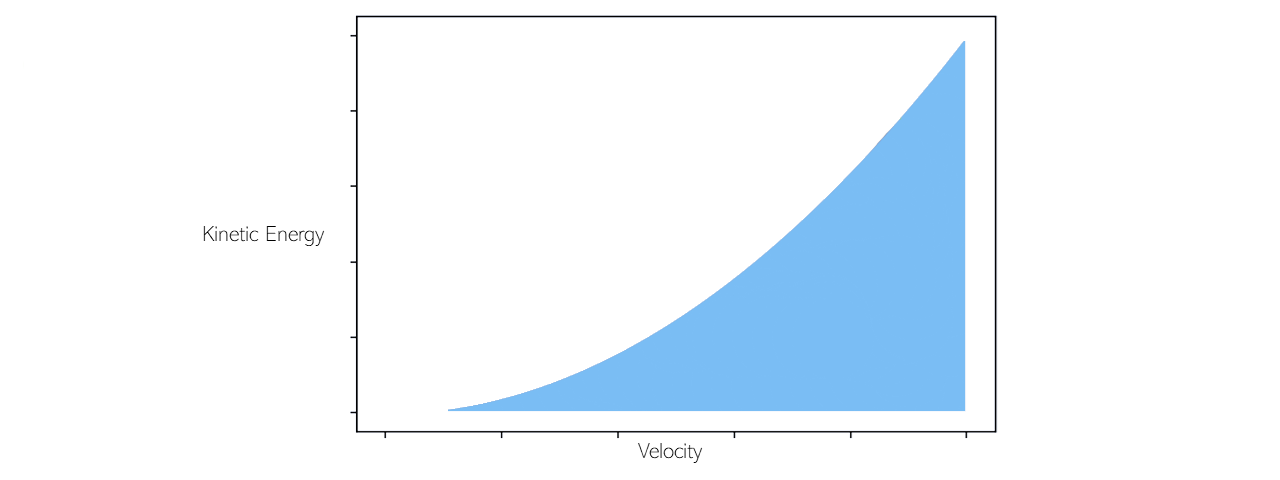
These concepts are introduced because they’re used to draw analogies to topics within fluid dynamics.
Fluid Energy #
A fluid can attain energy through one or both of the following mechanisms:
Static pressure - This is analogous to potential energy, and it describes the energy available for a fluid to push adjacent units of fluid. Static pressure doesn’t have direction, it pushes equally on all sides. As an example, consider a pressurized tank. The higher the static pressure inside the tank (relative to the outside), the harder the fluid pushes out on the walls.

| Point | Behavior |
|---|---|
| 1. | The ambient static pressure on the outside tries to push in the walls of the tank. |
| 2. | However, the higher static pressure on the inside wins the fight by pushing out harder. |
Dynamic pressure - This is analogous to kinetic energy, and it describes the energy associated with the momentum of a fluid. Simply put, a fluid in motion has dynamic pressure. Consider the same pressure vessel as above, but now it suddenly has a hole on top. The static pressure of the fluid is quickly converted to dynamic pressure as it’s rapidly ejected out.

| Point | Behavior |
|---|---|
| 1. | The fluid rapidly exchanges its static pressure for dynamic pressure as it spills out. |
| 2. | As a result, the static pressure within the tank is weaker, and the static pressure on the outside is stronger, resulting in less tank deformation. |
In aerodynamics, a fluid can have both types of energy at the same time. The sum of these two energy types is termed Total Pressure, and total pressure represents the total energy within the fluid.
Total Pressure = Dynamic Pressure + Static Pressure
As energy can’t be created or destroyed (First Law of Thermodynamics), when the energy isn’t in one type, it has to be in the other. This behavior is described by Bernoulli’s Principle.
This is an over-simplification that is to be clarified in the next article, but serves a deliberate purpose for now.
Converting the energy from one form to another is very useful in aerodynamics. The utility is best understood by considering a wind turbine. Wind turbines extract total pressure from the air and convert it into electrical energy.
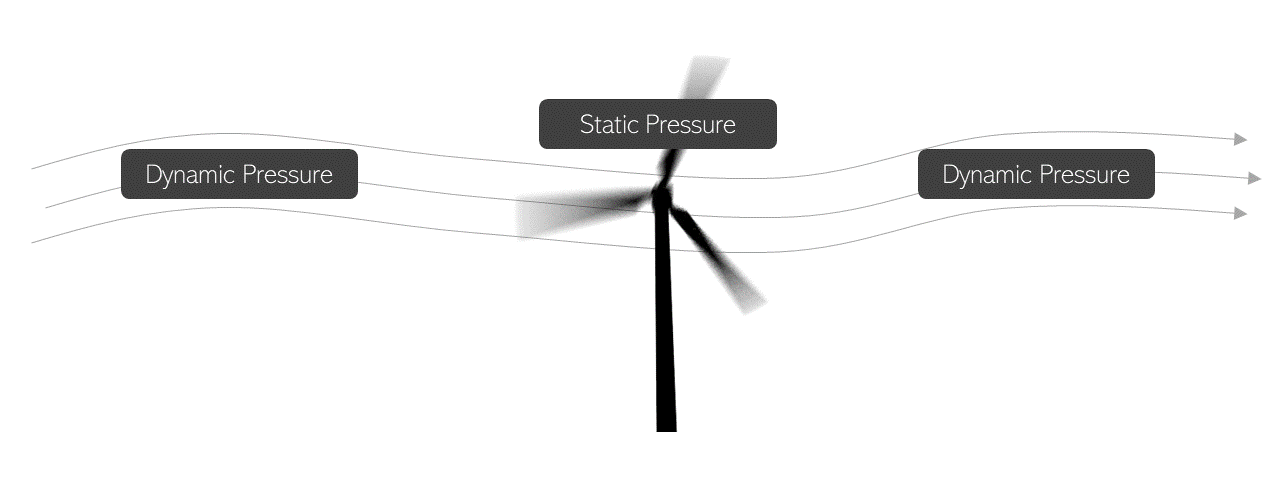
Wind turbines are placed in areas of high wind speeds, as high wind speeds have high dynamic pressure. When the flow is near the vicinity of the turbine blade, it’s at an impasse. The flow can’t just go directly into the blades, it has to find a way around. However, if all of the fluids energy is in the form of dynamic pressure, it has no mechanism by which it can change its flow direction.
To guide itself around, the flow near the blade is forced to exchange some of its dynamic pressure into static pressure. The push the static pressure field provides to the flow is what allows the flow to move around the turbine blade. However, the resulting static pressure field also generates a force which pushes on each fan blade, rotating the assembly and creating electricity.
Shown below is a cross section of a turbine blade with both the static and dynamic pressure fields. Because of Bernoulli’s Principle, they are virtually the inverse of one another.


| Point | Behavior |
|---|---|
| 1. | The streamlines approach the blade head on. |
| 2. | High static pressure (and low dynamic pressure) on the upper surface push the flow aside. |
| 3. | Low static pressure (and high dynamic pressure) on the lower surface pull the flow to the same side. |
| 4. | The near wall region doesn’t seem to abide by Bernoulli. This is explored in the next article. |
The static & dynamic pressure vary in relation to streamline curvature. As a useful rule of thumb, a concave inflection of the streamline results in higher static pressure and lower dynamic pressure, and a convex inflection results in lower static pressure and higher dynamic pressure. For the curious, the mathematics as to why this occurs can be found here.
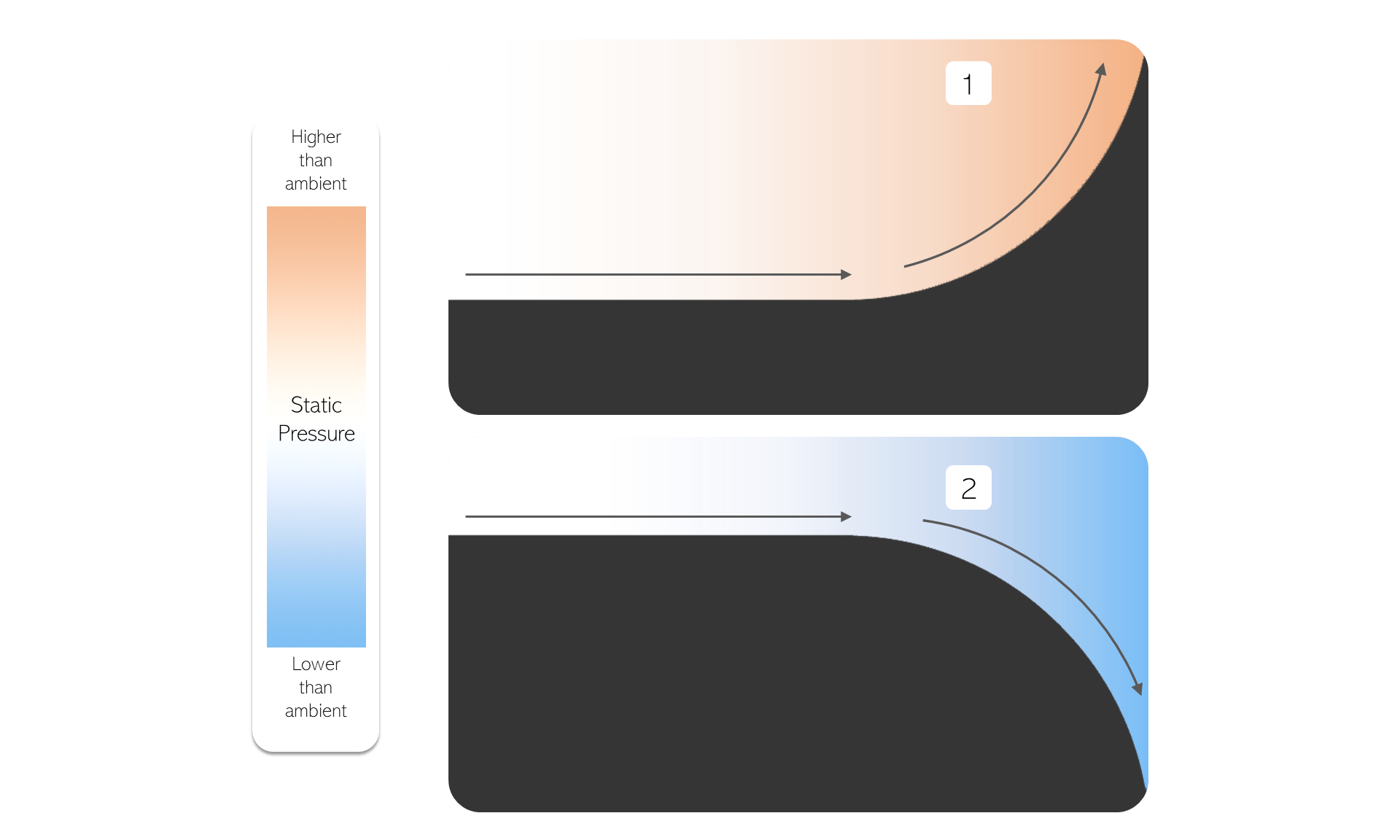
| Point | Behavior |
|---|---|
| 1. | A concave inflection of the streamline results in higher static pressure. |
| 2. | A convex inflection of the streamline results in lower static pressure. |
The static pressure field explains why air flows around things, and not at them (as discussed in first article, I - Form). The static pressure field projects the influence of the body beyond its perimeter, giving the flow ‘advance warning’ that something is coming. This static pressure field pushes the flow into the path of least resistance around the body, from areas of high to low static pressure.
Displaying the static pressure field around the streamlined body provides new insight.

| Point | Behavior |
|---|---|
| 1. | The high static pressure ahead of the body starts to push the flow aside early, creating divergence. |
| 2. | The lower static pressure on the sides acts to pull the flow next to the surface, creating convergence. |
| 3. | Finally, the higher static pressure at the back of the body realigns the flow at the trailing edge. |
Aerodynamicists only use ‘pull’ in the colloquial sense, as technically static pressure can only push. For example, a vacuum doesn’t pull particles inside it by creating ‘negative pressure’. Instead, a vacuum lowers its inside static pressure slightly below ambient (it’s still positive), and the higher static pressure on the outside pushes the particles inside.
Back to wind turbines, the higher the initial dynamic pressure (the faster the wind gust), the more powerful the static pressure needed to push the flow around the turbine blade, resulting in a faster spin of the assembly. Dynamic pressure, like kinetic energy, is proportional to the fluid density and to the square of the fluid velocity.
This squared relationship is important. A wind turbine placed in an area with ~1 mph wind gusts produces minimal energy, but placing the turbine in an area with 10mph wind gusts produces 100x the energy, and placing it in an area of 100mph wind gusts produces 10,000x the energy.
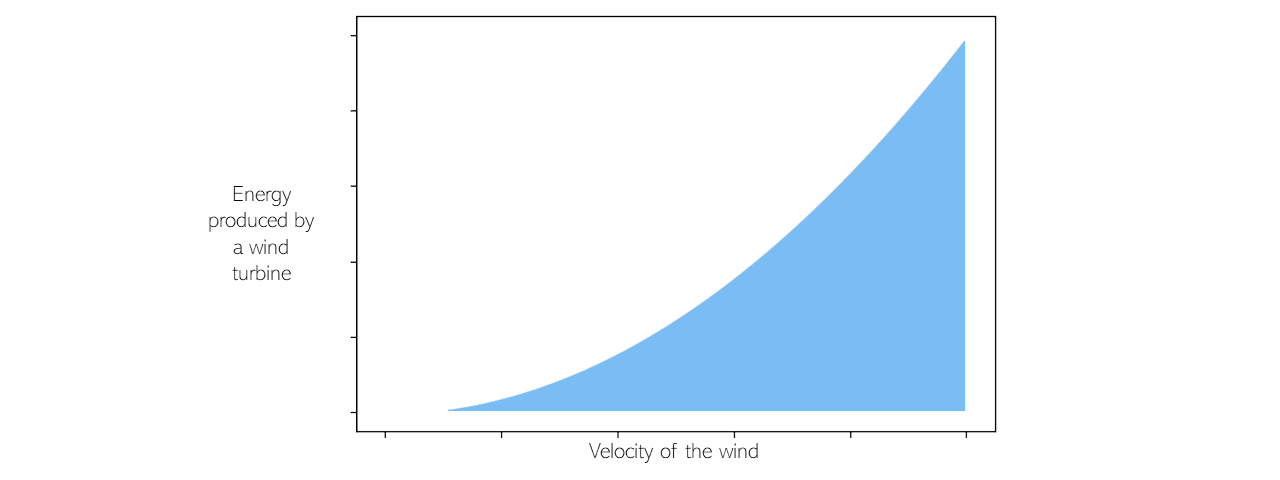
However, by virtue of the flow expending energy on the turbine blades, the flow downstream of the turbine has a diminished energy level, and therefore can do less work on other turbines. This is why the layout of a wind farm is so important. If subsequent turbines are directly downstream of the first, the flow has a significantly diminished ability to spin blades and create energy.
This effect can be seen below.
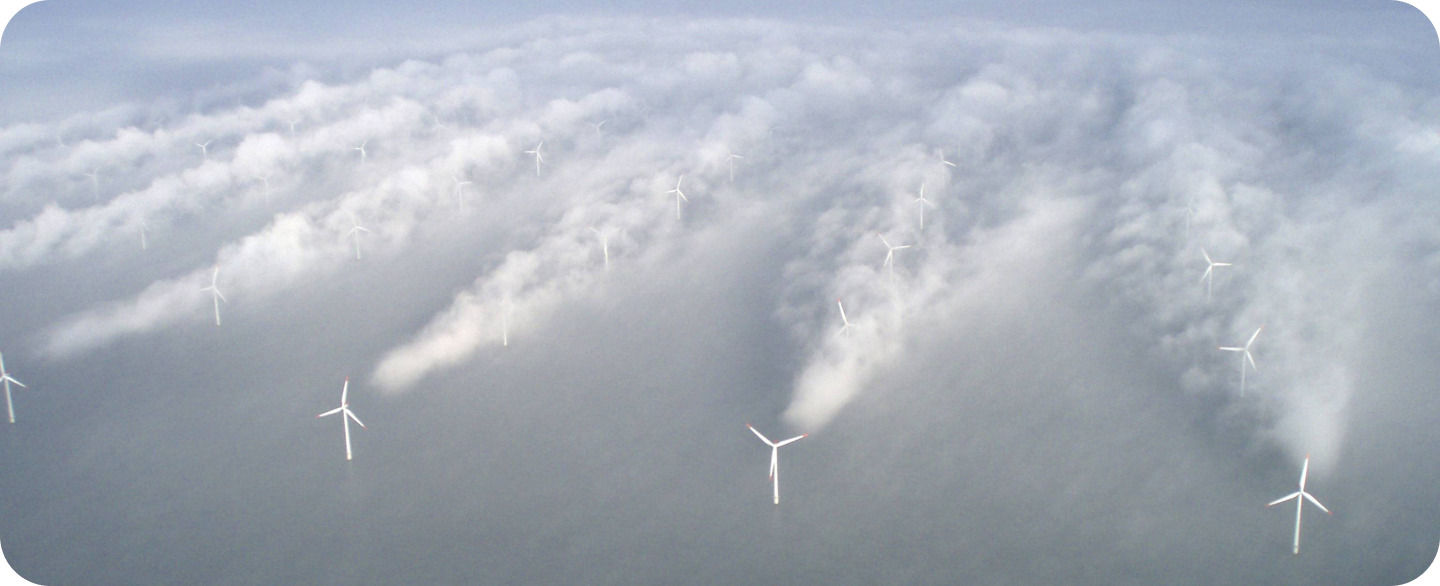
The layout of these turbines was optimized for the most likely flow direction, which minimizes influence of upstream turbines on the downstream ones. However, wind direction is variable, and the photographer captured an instance of the wind direction being unfavorable for the layout. Image courtesy of phys.org.
It’s All Relative #
So it’s been established that a fluid in motion has energy via total pressure. However, most real-world scenarios involve an object moving through a stationary fluid, so how is this relevant to aerodynamics?
To help answer that, consider the image below. Is it at all possible to tell whether the particles are moving past the camera, or if it’s the camera that’s moving quickly through the particles?

It’s not, and the same idea applies in aerodynamics. From the point of view of the object, the fluid is moving. From the point of view of the fluid, the object is moving. The behavior to an outside observer is identical in every way, so which frame is considered comes down to preference.
In wind tunnel testing & in simulation, it’s much easier to keep the object stationary and have fluid move past it. As a result, the standard is to think of the fluid in motion, as it’s less mental overhead than having to constantly switch between the two frames of motion. Henceforth, unless otherwise stated, it is be assumed the object is stationary and the fluid is moving.

Concluding Thoughts #
In review, recognizing where the energy is and what state it’s in is important for successfully deploying it to do useful work. A wind turbine requires forcing the flow to exchange its dynamic pressure into static pressure, static pressure which generates a force on the turbine blade allowing it to spin.
In a similar vein, the bodywork of an airplane or a car is designed to force the flow to create static pressure which acts on the bodywork to generate useful forces. Unfortunately, using the energy in this way carries some consequences. This is explored in Part III, where the reader is introduced to friction and how it saps energy from the flow.
For questions or clarifications on this, or any other article, reach out to Nav@WorksAero.com.